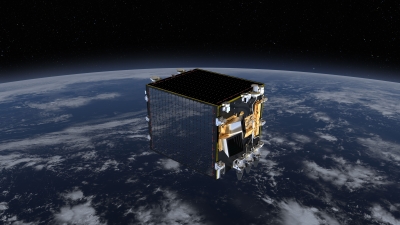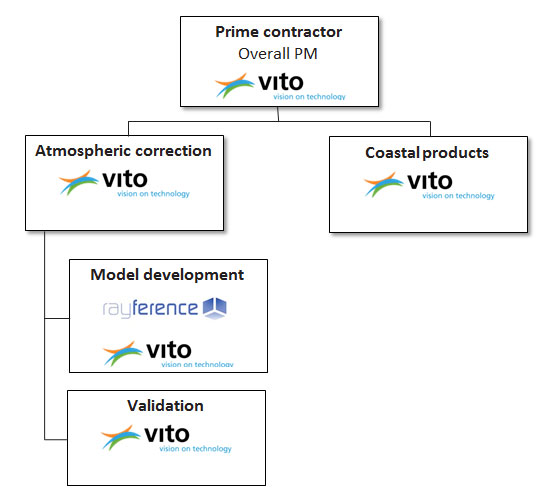- Activities
- PV-LAC-ATMO
PV-LAC-ATMO
Overview
At short wavelengths, the reflectance observed by a satellite sensor is a combination of surface and atmospheric signals, the latter – under clear conditions – being dominated by aerosols. In order to accurately estimate the terrestrial surface dynamics, the observed Top-of-Atmosphere (TOA) reflectances should be corrected for the influence of the aerosol contribution. The current operational Atmospheric Correction applied to Proba-V TOA observations (Sterckx et al. 2014) uses the Simplified Model for Atmospheric Correction (SMAC) v4.2 (Rahman and Dedieu 1994, Berthelot and Dedieu, 1997). The aerosol optical thickness (AOT) is estimated with an optimisation method that utilises a relation between TOA NDVI and the observed SWIR / BLUE reflectance ratio (Maisongrande et al. 2001).
The objective of the ATMO Activity was to investigate the added value of a joint surface reflectance – aerosol retrieval algorithm to improve the land surface reflectance characterisation derived from Proba-V observations. The suggested method took advantage of previous work (Govaerts et al. 2010), using an Optimal Estimation method originally developed for usage on Meteosat Spinning Enhanced Visible and Infrared Imager (SEVIRI) observations, which was adapted to enable application to Proba-V observations.
The proposed method, the Combined Inversion of Surface and AeRosols (CISAR, Govaerts and Luffarelli, 2017) primarily targeted to fulfil the Essential Climate Variable (ECV) generation requirements, which is most interesting for the processing of the entire SPOT-VGT/Proba-V time series, which will span 20+ years by Proba-V's End-of-Mission in October 2019. Given that the Proba-V spectral characteristics are very similar to those of SPOT-VGT, the same method could be applied to that dataset in the future. Therefore the work in this project solely focused on the 1 km resolution Proba-V data. A two-year joint surface reflectance and aerosol retrieval time series was compared to MODIS Bi-Hemispherical Reflectance (BHR, Lucht et al., 2000) and evaluated against Aerosol Robotic Network (AERONET, Holben et al., 1998) AOT observations, respectively.
Contact Information
If you have any questions about this project, contact:
Dr. Else Swinnen
Address: VITO – Remote Sensing, Boeretang 200, B-2400 Mol, Belgium
Email: else.swinnen@vito.be
Organisation: VITO
Dr. Fabrizio Niro
Address: ESA-ESRIN, Via Galileo Galilei Frascati (RM), 00044 Italy
Email: fabrizio.niro@esa.int
Organisation: ESA
Activity Consortium



